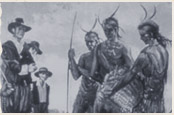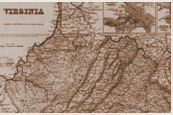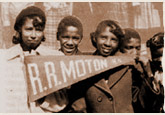An address to the Loyal Citizens and Congress of the United States of America adopted by a convention of Negroes held in Alexandria, Virginia, August 1865
The University of Groningen, The Netherlands
District of Columbia Company E, 4th U.S. Colored Infantry, at Fort Lincoln
Library of Congress
Fourteenth Amendment
Cornell University
Fifteenth Amendment
Cornell University
Description: This group of documents highlights the contributions of African Americans during the Civil War, reasons for granting suffrage to African Americans, and also the amendments that were passed granting African American males the right to vote. The speech is a fiery yet rational argument citing the loyalty of African Americans to the Union cause as reason to be granted legal protection through the right to vote. The photograph is of a group of African American soldiers in full uniform. Finally included here are transcripts of the 14th and 15th amendment which grant African Americans the right to vote and prohibit states from making laws to prevent voting by certain groups.
Teaching Tips:
"Do Now" Suggestions
- Have students read the speech and highlight contributions of African Americans to the Civil War era and the author’s reasons for seeking suffrage for African Americans.
- Using the photograph, have students brainstorm or review what roles African American soldiers and “contrabands” played in the Civil War.
- Have students read the 14th and 15th amendments and create a list of rights protected by them.
- Position these documents in group areas around the classroom. Then have the students move between the stations analyzing the documents. At each station have the students answer specific questions regarding the social impact of these documents.
- Use the speech and the photo of the 4th U.S. Colored Infantry to introduce the argument for African American suffrage following the Civil War. Then analyze the 14th and 15 amendments to discover the hardships faced by African American voters.



